General
Please use all available parking positions to improve the trafic flow and to reduce delay, not only A and B stands! Check free parking positions here: https://vatsim-radar.com/airport/EDDF
Before you fly...
Welcome to Frankfurt/Main! This is one of the busiest airports in the world and the busiest airport on VATSIM. Due to the amount of traffic and the airport's complexity, it is very important that you prepare yourself thoroughly to keep it fun for everyone and avoid mistakes which might lead to delays for yourself and other users.
As Frankfurt/Main sees very regular staffing, it attracts a lot of pilots. If you are new to VATSIM, however, you might want to avoid the airport until you have gotten more comfortable with flying on the network. Controllers at Frankfurt/Main are usually too busy to provide much assistance to new users. There are many other, less busy and less complicated airports throughout Germany which see regular staffing as well and where controllers have more time for you.
Parking position
Please make sure you choose an appropriate stand for your aircraft type.
Do not use stands V151, V152, and V153. These stands are located in the same position as the old N8 taxiway, which many sceneries still use. Parking at one of these stands would block the taxiway for other users and you can expect controllers to ask you to reposition yourself.
A380 parking positions
With the FBW A380 release for MSFS, we suggest using the following parking positions for the best experience. Only the positions below are suitable for the A388.
- A54, A58, A62 (DLH)
- C14S, C15S, C16S (DLH, QTR)
- B26, B28, B46 (SIA, AAR, THA)
- D4, E2, E5, E9 (UAE, KAL, ANA, JAL, ETD, AFR, BAW, CSN)
- V135, V161, F231, F232, F233, F234, F237, F238 (remote, secondary)
- G7, G9, G11, G13, K8, K10 (ferry)
Communication
Complex instructions
As there are various complex procedures at Frankfurt/Main, you may well encounter instructions that you are unable to comply with. This doesn't even have to be a lack of skill on your part: sometimes your simulator simply doesn't have the functionality required.
If you are unsure what the controller wants you to do or receive an instruction that you are unable to comply with for any reason, hold position and inform ATC immediately. Not doing so will most likely result in you doing something else than ATC expects, thus causing major problems and delays; on the other hand, controllers have no problem with you asking for an explanation or a different instruction.
Handoffs
When instructed to contact another controller, do so as soon as possible. This will avoid you having to stop moving or level off. Additionally, do not change your frequency without a handoff as all frequency changes at Frankfurt require an explicit handoff by ATC. Please do not hold your position to switch the frequency, keep moving on the ground!
Be aware that some frequencies in use might not be shown in the controller list of your pilot client, so it is important that you listen carefully to what ATC says.
Special taxi procedures
As Frankfurt/Main has a big and complex apron, there are various special taxi procedures which you might not be used to. Please familiarize yourself with them.
You must also be prepared to receive various hold short and give way instructions. Additionally, you should be prepared for revisions to your taxi clearance on short notice as the situation on the apron usually evolves very dynamically.
Colored lines
Some areas of the apron have colored taxiway lines which allow for more efficient taxi operations with aircraft up to a wingspan of 36 meters.
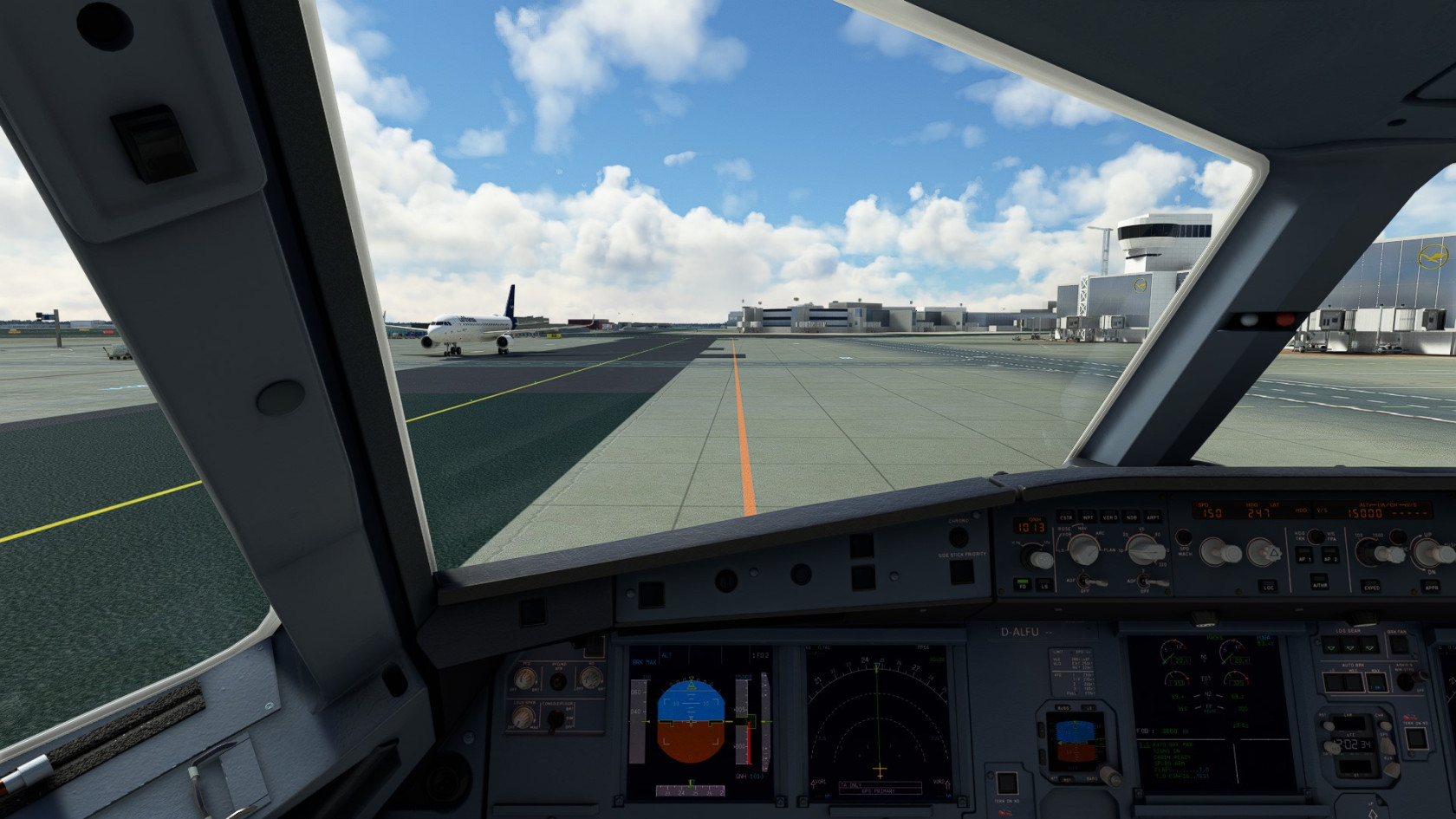
taxiing on N orange with opposite traffic on N blue
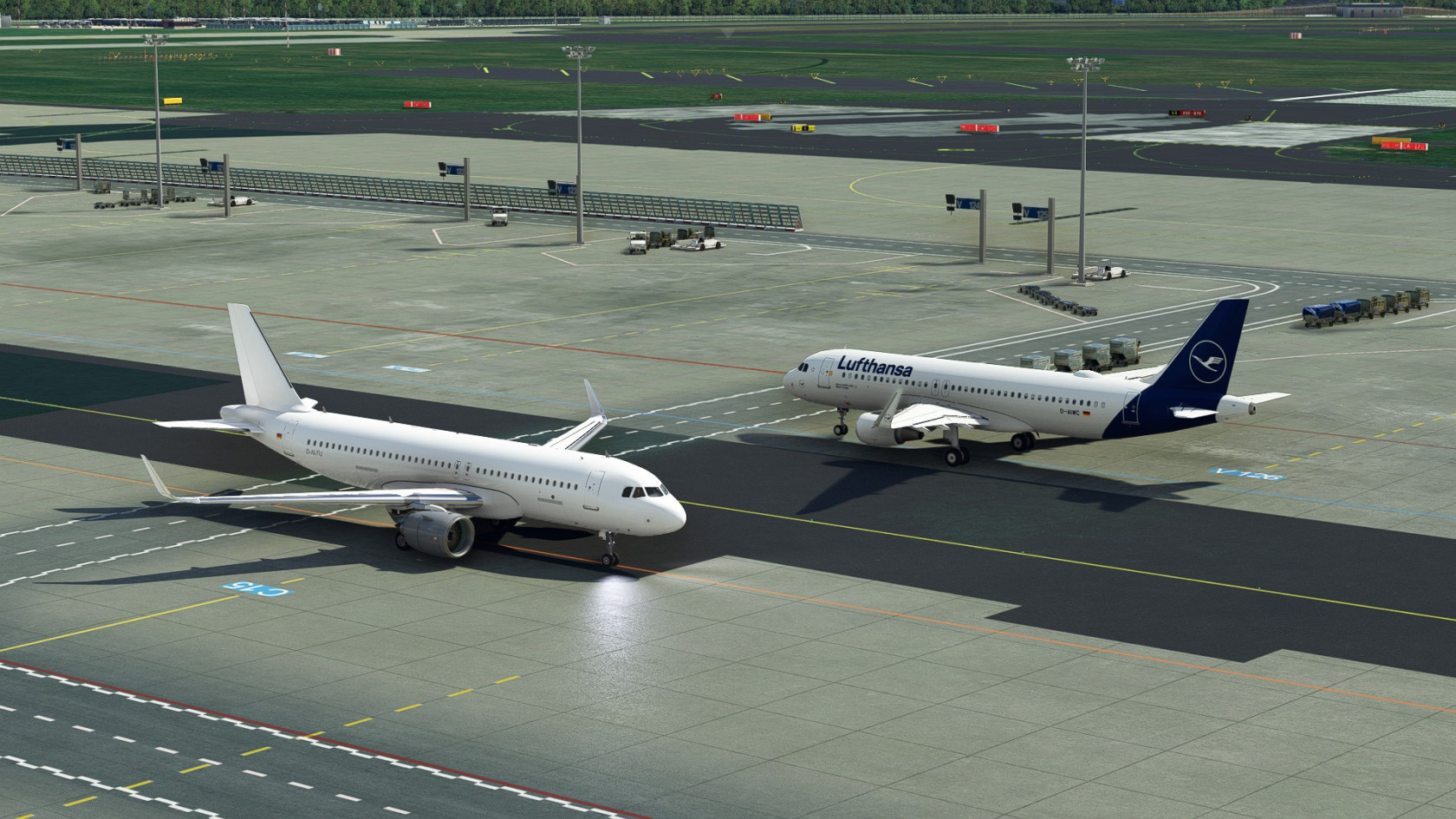
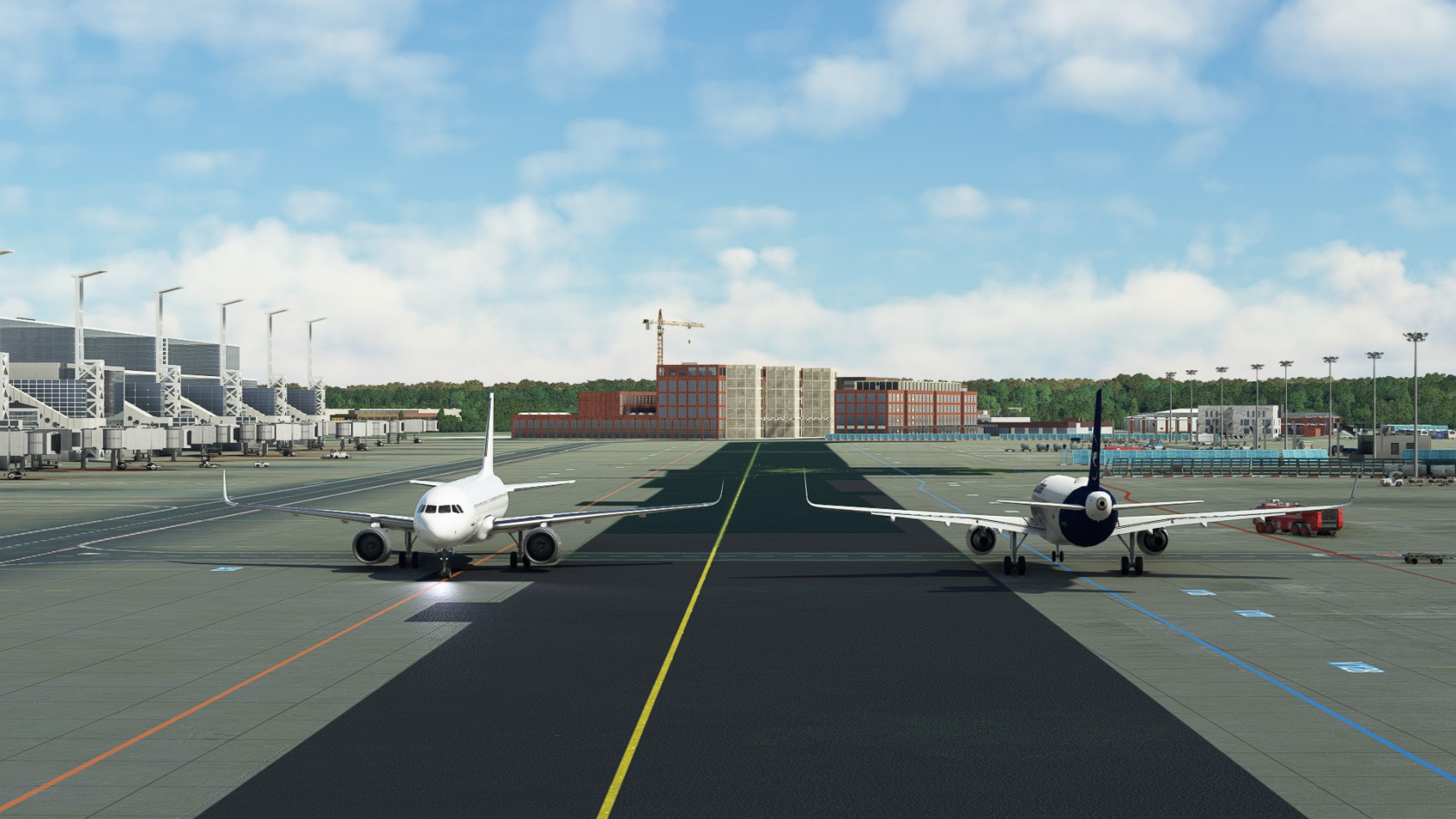
two aircraft passing each other on N orange and blue
Links
The apron at N7 and N8 utilizes so called Links to connect both taxiways at different points to allow for more efficient operations during periods of high traffic. Please refer to the images below if you are unsure which of the taxiway lines is the Link (you can click on the images to open a high resolution version).
Link 3
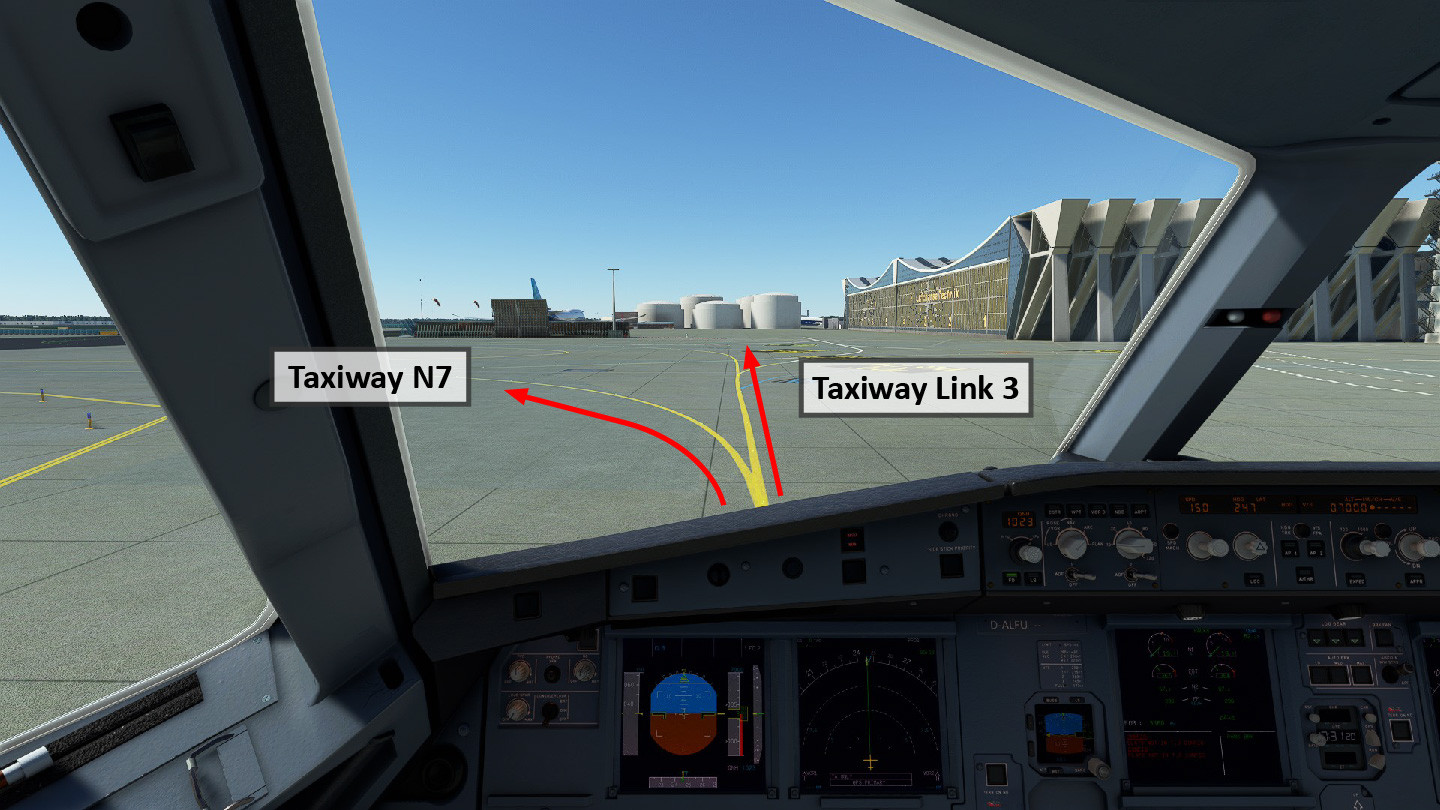

looking at Link 3 from the East (left) and the South (right)
Link 4
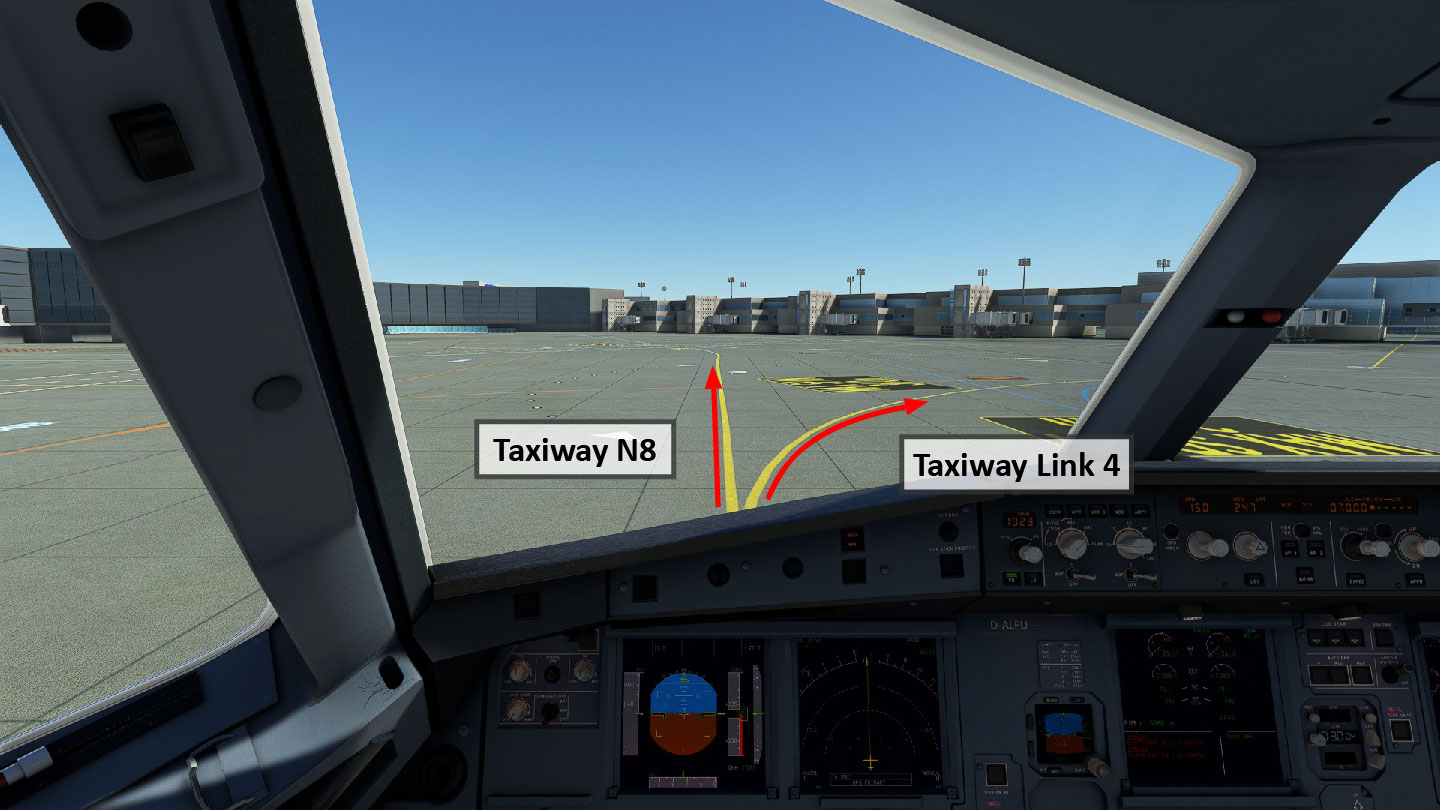
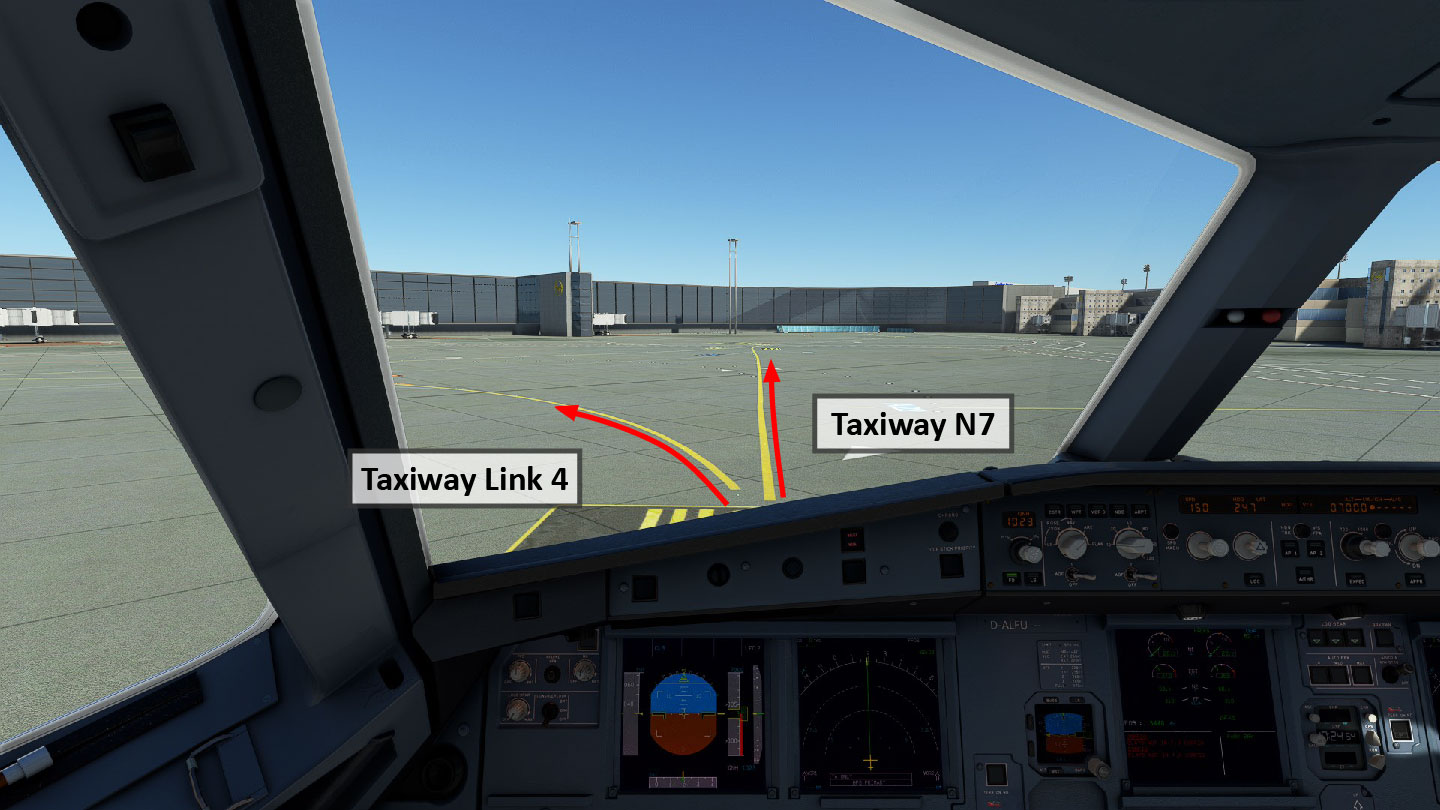
looking at Link 4 from the West (left) and the South (right)
Link 5
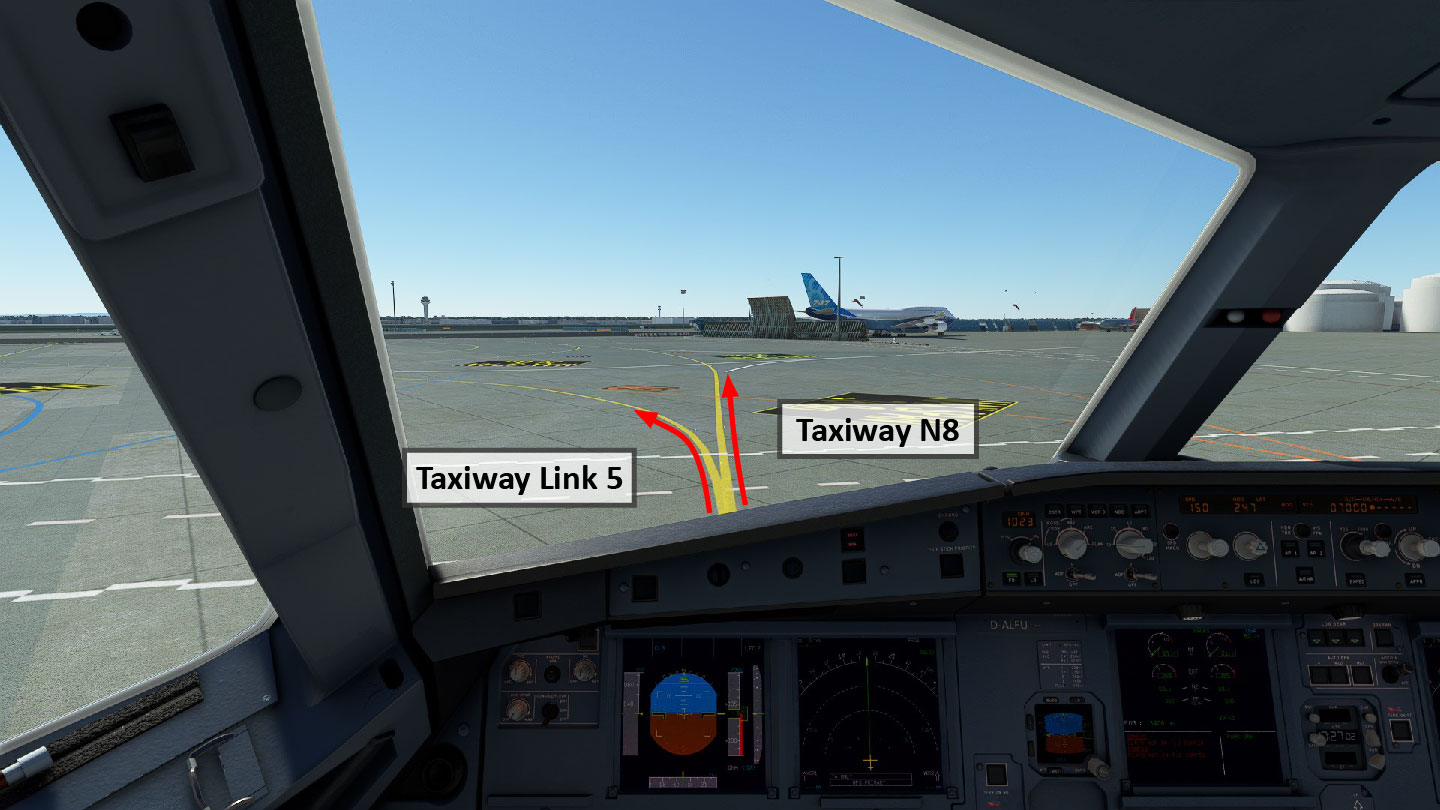
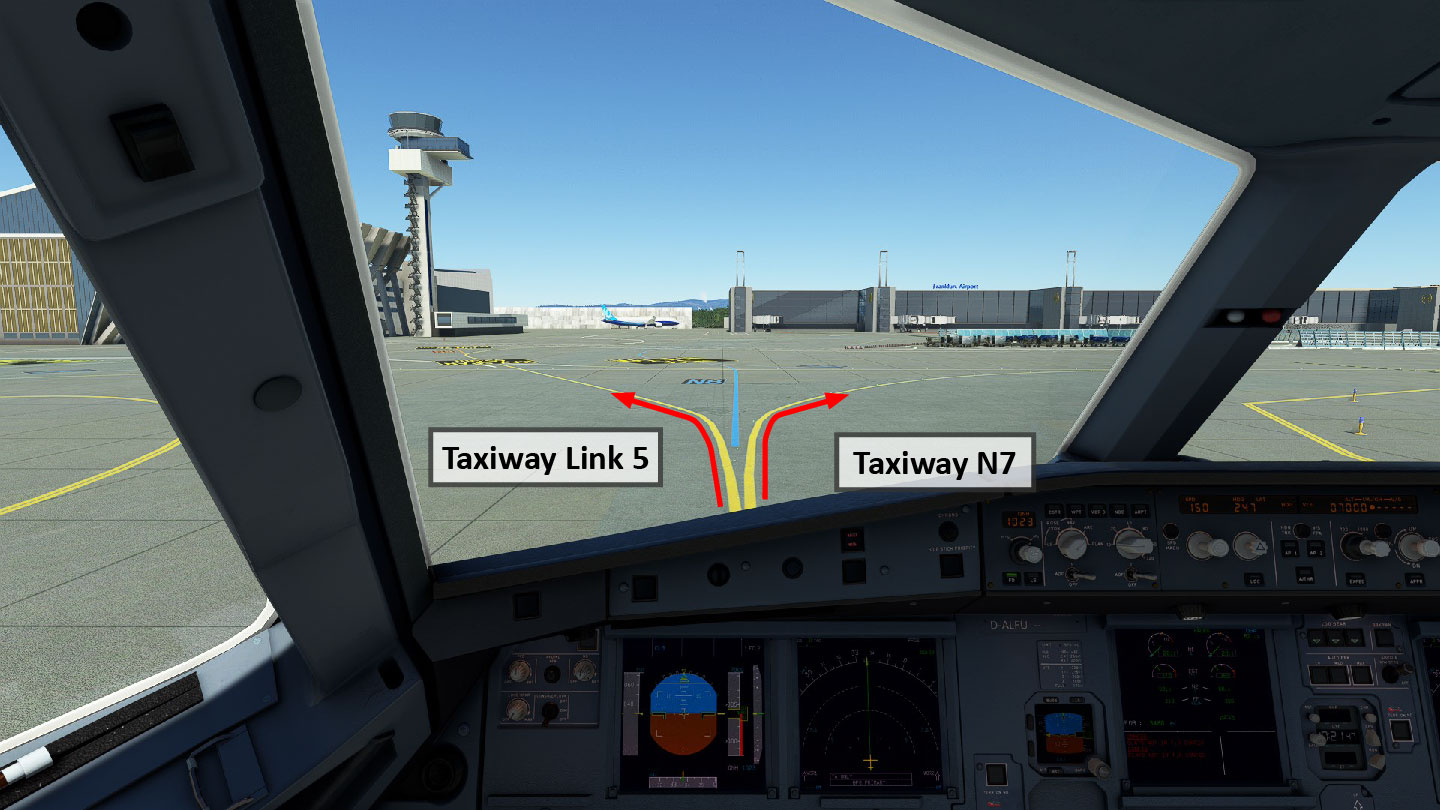
looking at Link 5 from the North (left) and the South (right)
Stopbars
There are multiple stopbars on taxiways U, T, and Y, which protect the extended centerlines of runways 25C/07C and 25L/07R. Do not cross these stopbars without explicit clearance as this would be considered a runway incursion. When cleared to cross a stopbar, do not stop moving until the entirety of your aircraft is past the following stopbar.

